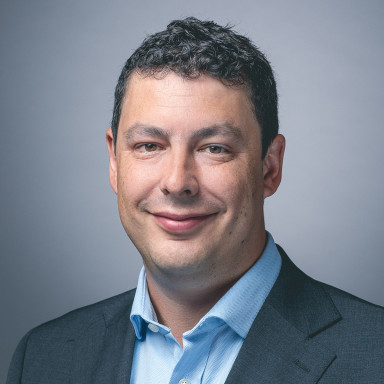The fund provides exposure to corporate bonds, mainly those with investment grade credit ratings, offering diversification to a portfolio focused on shares
Kristian Atkinson has taken over as lead manager with effect from 1 October 2023
Atkinson and new co-manager Pankhania benefit from the support of Fidelity's extensive in-house research team
The fund is on our Wealth Shortlist of funds chosen by our analysts for their long-term performance potential
How it fits in a portfolio
The Fidelity Sustainable Moneybuilder Income fund aims to provide a relatively steady income and a small amount of growth, without taking excessive risks, by investing in bonds. The incorporation of meaningful Environmental, Social and Governance (ESG) analysis differentiates this fund from many within its peer group in the IA £ Corporate Bond sector.
We think the fund could help diversify an investment portfolio focused on shares, as well as being a useful diversifier within a portfolio focused on providing a high income. The sustainable tilt also makes this fund suitable for investors who don’t want to invest in companies involved in certain activities such as weapons, tobacco, thermal coal and gambling.
Manager
The fund is co-managed by duo Kristian Atkinson and Shamil Pankhania, following the retirement of Sajiv Vaid at the end of 2023. Atkinson joined Fidelity in 2000 and has been a fund manager since 2013. He became co-manager of this fund in 2019. Pankhania joined Fidelity in 2023 and has over a decade of experience as a bond manager, having worked at PIMCO, BlackRock and most recently HSBC Global Asset Management. He was named as a co-manager on this fund in March 2023.
Atkinson and Pankhania benefit from Fidelity's extensive in-house research team to help them put together the portfolio. The duo manage other bond funds too, but they’re supported by a well-resourced fixed income team at Fidelity, so we feel they can comfortably handle their other responsibilities.
Process
Most bond managers analyse the bigger economic picture and Atkinson and Pankhania are no different. But we also think a strength of the team is their skill at analysing bond-issuing companies. It helps them determine which are the most attractively priced bonds and should be included in the fund. The managers can invest overseas but investors should expect the fund to retain a strong UK bias.
Atkinson and Pankhania aim to provide a decent level of income, offer some stability in turbulent times, and perform differently to funds focused on shares. The portfolio includes collateralised debt, where borrowers have to post security for a loan in the same way you might use a house as collateral for a mortgage. The investor has something to rely on if the borrower doesn't pay money owed to bond holders. This differentiates the fund from some other bond funds. The managers also make use of their ability to invest in lower-risk government bonds and can invest in derivatives, which adds risk. The fund is well diversified, so no single area should have a significant effect on performance.
They have increased their investments in secured bonds over the last year, with around 23% of the fund now invested here. Holdings in UK government bonds and quasi-sovereign bonds (those issued by companies that are part owned by governments or have significant revenue from government contracts) have also been increased. At the same time, they have reduced their investments in banks and utilities over the year.
In terms of credit quality, their overall positioning remains broadly similar to how it was at the start of 2023. That said, they’ve reduced investments in AAA rated credit (the highest rating available) a little bit, in favour of AA rated credit (which is deemed to be slightly more risky). Overall the managers continue to have a bias towards BBB rated credit, the lowest rated credit available within the investment grade classification. They believe the additional returns available on BBB rated bonds more than compensate for the additional risk taken by investing in them. The managers also invest in high yield and unrated bonds. These areas have the potential to offer higher yields, however they carry higher risk.
Culture
Fidelity is privately owned. This independence should mean it can focus on the long-term interests of investors rather than short-term shareholder demands. The managers are incentivised based on the longer-term performance of the fund. We think this is a positive as it aligns their interests with those of their investors. They do well when their investors do well.
ESG Integration
The team formalised integration of ESG analysis in 2022. This means increased levels of engagement and the exclusion of companies involved in controversial areas, such as weapons, tobacco, thermal coal and gambling. The managers will also avoid companies violating the UN Global Compact – a UN pact on human rights, labour, the environment and anti-corruption.
At least 70% of the fund invests in bonds issued by companies with sustainable characteristics, as defined by both Fidelity’s proprietary Sustainability Ratings and external ESG scores. The remainder invests in issuers demonstrating improving sustainable characteristics, and the managers will engage with these companies to agree improvement milestones and timescales.
The managers made these changes because they think these factors have the potential to affect the long-term value of the investment and believe high standards of corporate responsibility make good business sense. They also think they can improve risk adjusted returns and achieve more positive sustainable outcomes by incorporating sustainable factors into their investment process.
At a wider business level, Fidelity has committed to improving its approach to ESG in recent years. They’ve developed a structured engagement program which allows them to be more systematic in their engagement on environmental and social issues, become involved in more collaborative engagement initiatives and introduced ESG data into fund managers’ quarterly reviews to raise awareness of ESG issues. The firm has also bolstered its dedicated ESG team, which writes regular ESG reports on companies that Fidelity fund managers invest in. The firm votes where it is possible to do so and quarterly voting reports are posted online, complete with rationales for votes against management and abstentions.
Cost
The fund has an annual ongoing charge of 0.54%, but we’ve secured HL clients an ongoing saving of 0.20%. This means you’ll pay a net ongoing charge of 0.34%. The fund discount is achieved through a loyalty bonus, which could be subject to tax if held outside an ISA or SIPP. The HL platform fee of up to 0.45% per year also applies.
Performance
Since Atkinson became a named manager on this fund at the start of 2019, it has underperformed the IA £ Corporate Bond sector average, returning 2.55%* compared with 5.72%. Past performance is not a guide to future returns.
We think the managers are relatively cautious investors, so ordinarily the fund is managed conservatively with a focus on companies less likely to default on their debts. This means it could lag the benchmark during good times, but provide some shelter when markets fall. This wasn’t the case during 2022 however, where the fund underperformed the peer group and benchmark during a period where bonds generally lost a lot of value.
Over 2023, the fund performed broadly in line with peers, returning 9.07% compared to the sector average return of 9.23%. The fund’s higher than average yield helped performance. Their bond selection was also more positive than most, adding to returns for the year. Bonds from Intu Debenture Plc, Roadster Finance and RAC are examples of specific bonds that performed well for the fund.
It wasn’t all good though, with some bonds they didn’t invest in doing particularly well, such as bonds issued by KFW and European Investment Bank. This hurt performance compared to peers. Their duration positioning also hurt performance over the year. Duration is measured in years and reflects how sensitive the fund is to interest rate changes. It’s been a year where interest rate expectations have been volatile, often changing quickly. This has made it difficult to navigate and at times, the managers got caught out in the volatility.
The fund currently has a yield to maturity of 5.5%, though yields are not a reliable indicator of future income and income isn’t guaranteed.
Annual percentage growth
Dec 18 - Dec 19 | Dec 19 - Dec 20 | Dec 20 - Dec 21 | Dec 21 - Dec 22 | Dec 22 - Dec 23 | |
|---|---|---|---|---|---|
9.70% | 7.74% | -1.41% | -19.31% | 9.07% | |
IA £ Corporate Bond | 9.51% | 7.75% | -1.90% | -16.33% | 9.23% |







